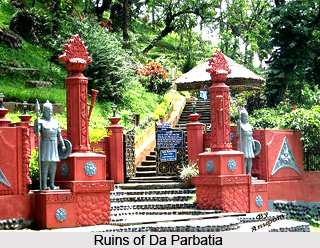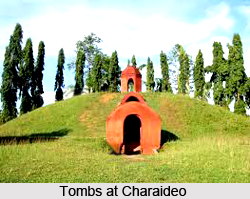 Archaeological sites in Assam are the various historical places located in this north-eastern Indian state which have revealed ancient civilizations and different kinds of antique artefacts. These portions of the country attract a vast quantity of historians and travellers, particularly those who are fond of old historical structures. Numerous excavations have been conducted in all these sites by the Archaeological Survey of India or ASI, which has enabled the discovery of the marvellous masterpieces of old civilizations. Ambari, Charaideo, Da Parbatia, Madan Kamdev and Sri Surya Pahar are amongst the significant archaeological sites in Assam.
Archaeological sites in Assam are the various historical places located in this north-eastern Indian state which have revealed ancient civilizations and different kinds of antique artefacts. These portions of the country attract a vast quantity of historians and travellers, particularly those who are fond of old historical structures. Numerous excavations have been conducted in all these sites by the Archaeological Survey of India or ASI, which has enabled the discovery of the marvellous masterpieces of old civilizations. Ambari, Charaideo, Da Parbatia, Madan Kamdev and Sri Surya Pahar are amongst the significant archaeological sites in Assam.
Ambari
Ambari is situated in the north-western portion of Guwahati, the capital of Assam. Assam State Museum, Rabindra Bhawan, District Library, Guwahati Press Club and Gauhati University City Office are some of the famous buildings based here.
Da Parbatia
The site of Da Parbatia is existent near Tezpur in Assam and consists of a Hindu temple which has been constructed in the 6th century. Above the remnants of this ancient structure is present a Shiva temple made in brick which is believed to have been erected in the Ahom age. This had been demolished by the Assam earthquake of 1897 and therefore one will be able to witness only the door frame of the original temple structure. The Archaeological Survey of India has been entrusted the responsibility of protecting this site. The two sides of the temple contain two jambs named Yamuna and Ganga who hold garlands in their hands. There is a gigantic block of stone near the lingam of the temple.
 Charaideo
Charaideo
It is said that Charaideo was the very first capital of the Ahom kingdom, which was founded by Chao Lung Siu-Ka-Pha in 1228, the first Ahom ruler. `Che Tam Doi` stands for: `Che` meaning town, `Tam` meaning Foot Hill and `Doi` signifies hill or mountain. It is present at a distance of nearly 30 km from Sibsagar, on Sibsagar-Simaluguri road. Tombs or `maidams` of many Ahom kings and their queens exist in Charaideo, which is also believed to be the celestial abode of the ancestral deities of the Ahoms. These burial grounds can be compared to the pyramids of Egypt. The `Bali Maidam` is the largest tomb and it is existent close to Nimonagarh. It is referred to as Bali Maidam because the British received obstruction from the surrounding sands while they plundered it.
Madan Kamdev
Madan Kamdev is present in Baihata Chariali in Kamrup which is as old as the 9th and the 10th century A.D. Ruins found at this archaeological site bears testimony to the powerful reign of the Pala Dynasty rulers. The site occupies an area of 500 metres and boasts of the idols of Uma Maheshwar which have been beautifully carved on the temple stones of the medieval temples. The distinguished statues are those of Vidyadhar, Ganesha and Sun are also located here.
Sri Surya Pahar
Situated at a distance of about 12 km from the south-eastern part of Goalpara town and 136 km from the north-western portion of Guwahati, Sri Surya Pahar is an important archaeological site present in this Indian state. The remains of many types of Buddhist, Jain and Hindu deities can be noticed in this place. However, Surya Pahar is renowned for the presence of numerous Stupas and rock-carved Shiva Lingas. A mythological account has declared that this region possesses 99, 999 Shiva Lingas which were embedded by Vyasa, who had aimed to build a second Kashi, which is considered as one of the most sacred pilgrimage spots of the country. Excavations have suggested that a marvellous civilization once inhabited this portion of the nation, many centuries ago. Several archaeologists have pointed out that these wonderful findings at Sri Surya, complete with remnants of creatively designed houses with bricks, lead to the conclusion which might alter the historical evidences of ancient Assam and India.



















